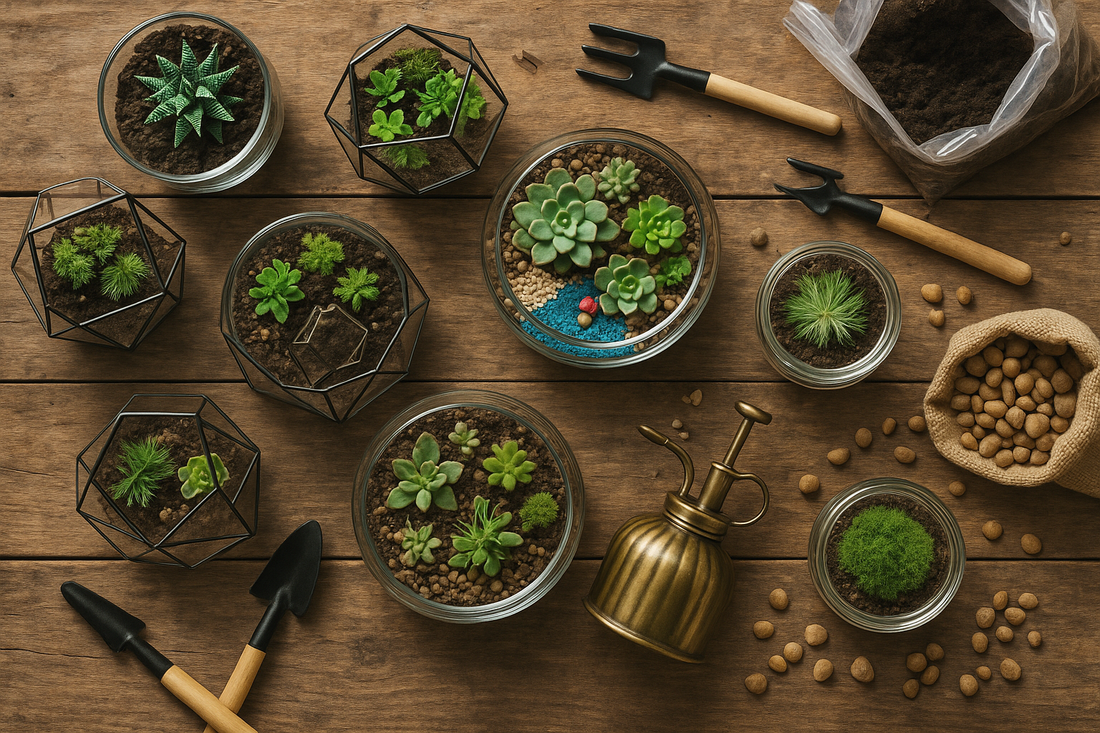
Terrariums: A Guide to Creating Your Own Miniature Ecosystem
Share
What is a Terrarium?
A terrarium is a self-contained ecosystem, a miniature world in a glass container. It's a fascinating way to bring the beauty of nature indoors and enjoy the tranquility of a mini-garden. Terrariums are relatively low-maintenance, making them an excellent choice for busy individuals or those who lack a green thumb.
Types of Terrariums
There are three main types of plant terrariums:
- Desert Terrarium: These terrariums mimic the arid conditions of a desert, featuring cacti, succulents, and other desert plants. They require minimal watering and a sunny location.
- Tropical Terrarium: These terrariums recreate the lush, humid environment of a tropical rainforest. They typically feature ferns, mosses, and other moisture-loving plants. They need more frequent watering and a shaded location.
- Closed Terrarium: These terrariums are sealed to create a self-sustaining ecosystem. They rely on the natural processes of photosynthesis and evaporation to maintain moisture levels.
Creating Your Own Terrarium
Building a terrarium is a fun and rewarding project. Here's a step-by-step guide:
Step 1: Choose Your Container or Tank
Select a glass container or tank with a wide opening for easy access and clean it thoroughly.
Step 2: Add Drainage
Place a layer of gravel, pebbles or leca at the bottom to provide drainage and prevent waterlogging.
Step 3: Add Charcoal
A layer of activated charcoal helps to filter the water and prevent mold and mildew from growing.
Step 4: Add Soil
Choose a potting mix suitable for indoor plants. For desert terrariums, use a cactus potting mix. For tropical terrariums, use a standard potting mix.
If your tank is going to be used to house a reptile, then use the appropriate substrate your animal requires. The plants can remain potted and be "planted" in the substrate.
Step 5: Plant Your Selections
Carefully plant your chosen plants, leaving enough space for them to grow. Be mindful of their light requirements and water needs.
Step 6: Add Decorations
Decorate your terrarium with rocks, driftwood, or other natural elements to create a visually appealing scene.
Step 7: Water and Maintain
Water your terrarium sparingly, only when the soil feels dry. The frequency will depend on the type of terrarium and the climate. Monitor the humidity levels and adjust watering accordingly.
Caring for Your Terrarium
Terrariums are relatively low-maintenance, but they do require some attention.
- Watering: Water only when the soil is dry. Overwatering can lead to root rot.
- Light: Provide the appropriate light levels for your plants. Desert terrariums need bright, indirect light, while tropical terrariums prefer filtered light.
- Ventilation: Ensure adequate ventilation for closed terrariums to prevent excessive humidity.
- Pruning: Trim any overgrown or dead plants to maintain a healthy ecosystem.
Benefits of Terrariums
Terrariums offer numerous benefits:
- Aesthetically pleasing: Terrariums add a touch of natural beauty to any space.
- Low maintenance: They require less care compared to traditional houseplants.
- Educational: They provide a fascinating glimpse into the world of ecosystems.
- Air purifying: Plants in terrariums help to purify the air.
Conclusion
Creating a terrarium is a fun and rewarding experience that allows you to bring a miniature world indoors. With a little care and attention, your terrarium will thrive and provide you with years of enjoyment.
